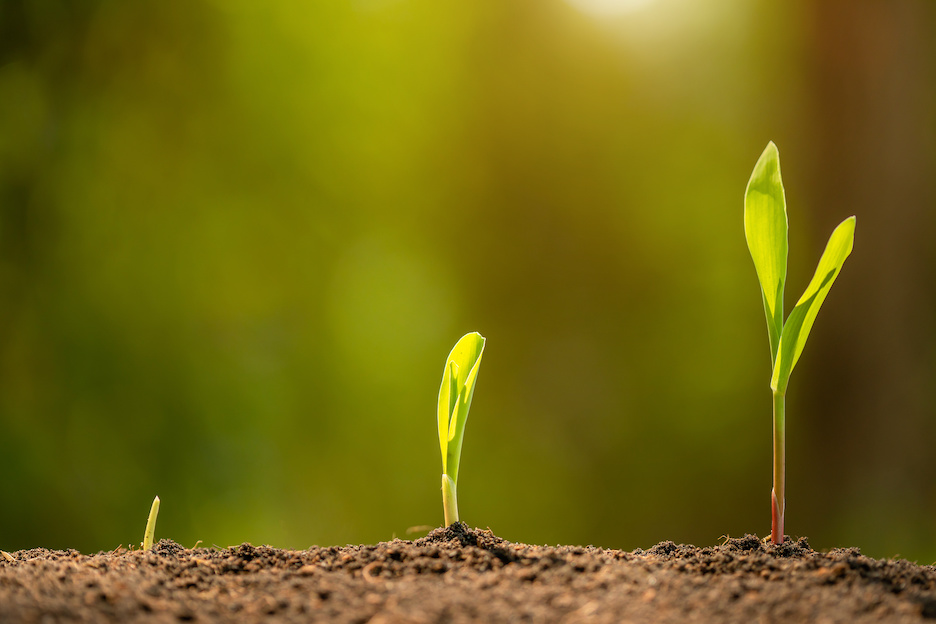Is Your Seed Safe?
Mar 21, 2022

“Seed safety is an important consideration as we head into planting,” said Nick Schaps, Federated agronomy sales rep at the Ogilvie location.
High rates of fertilizer (urea, phosphorous, and potassium) all contribute to plant health as long as the nutrients don’t damage seed viability at the start. Fertilizer injury happens in two ways, due to ammonia (NH3 toxicity) and/or salt injury.
NH3 results from the urea breaking down, and as NH3 can be toxic when the urea is close to the seed. This is especially true in dry and acidic soils where there’s not enough moisture to prevent the toxicity. In moist soils, the H+ ions from water rapidly attach themselves to NH3 and convert it to NH4+ (ammonium), avoiding toxicity.
Salt injury occurs because different fertilizer sources have differing salt levels. “If there is excess fertilizer in the seed row, the salt index will increase. If the salt index in the seed row is greater than the salt levels in the germinating seed, moisture is pulled from the seed into the seed row through osmotic pressure,” said Schaps.
The fertilizer application method can spell the difference between seed safety and seed damage.
While there are many ways to apply starter, and “all have merit,” said Schaps, the two most common, effective, and efficient practices are in-furrow and two-by-two placement. Yet, there are important differences that can affect seed safety.
In-furrow applications have the highest likelihood of causing seed injury, and consequently, the best option for in-furrow is to use a very safe liquid fertilizer at safe rates, such as 6-24-6 or 9-18-9 at a rate of 3-5 gal./ac. (It is not recommended to apply liquid 10-34-0 in furrow due to its higher salt content, which can cause injury.)
A two-by-two starter application puts soil between the seed and the fertilizer, thereby improving the likelihood of seeds being protected. Good options include UAN blended with ammonium thiosulfate, 10-34-0, or other dry fertilizer blends. With two-by-two application, “upwards of 60-80 lbs./ac. can be applied safely,” said Schaps.
Schaps noted that two-by-two application “provides accurate product placement and can reduce overall fertilizer requirements for the crop” – a significant cost-saving consideration in a year of high fertilizer prices.
“If you have any questions about the starter program that will work best for your operation don’t hesitate to reach out,” said Schaps. Your Federated Agronomist is ready to get your starter fertilizer needs locked in. Act now to secure your product.
High rates of fertilizer (urea, phosphorous, and potassium) all contribute to plant health as long as the nutrients don’t damage seed viability at the start. Fertilizer injury happens in two ways, due to ammonia (NH3 toxicity) and/or salt injury.
NH3 results from the urea breaking down, and as NH3 can be toxic when the urea is close to the seed. This is especially true in dry and acidic soils where there’s not enough moisture to prevent the toxicity. In moist soils, the H+ ions from water rapidly attach themselves to NH3 and convert it to NH4+ (ammonium), avoiding toxicity.
Salt injury occurs because different fertilizer sources have differing salt levels. “If there is excess fertilizer in the seed row, the salt index will increase. If the salt index in the seed row is greater than the salt levels in the germinating seed, moisture is pulled from the seed into the seed row through osmotic pressure,” said Schaps.
The fertilizer application method can spell the difference between seed safety and seed damage.
While there are many ways to apply starter, and “all have merit,” said Schaps, the two most common, effective, and efficient practices are in-furrow and two-by-two placement. Yet, there are important differences that can affect seed safety.
In-furrow applications have the highest likelihood of causing seed injury, and consequently, the best option for in-furrow is to use a very safe liquid fertilizer at safe rates, such as 6-24-6 or 9-18-9 at a rate of 3-5 gal./ac. (It is not recommended to apply liquid 10-34-0 in furrow due to its higher salt content, which can cause injury.)
A two-by-two starter application puts soil between the seed and the fertilizer, thereby improving the likelihood of seeds being protected. Good options include UAN blended with ammonium thiosulfate, 10-34-0, or other dry fertilizer blends. With two-by-two application, “upwards of 60-80 lbs./ac. can be applied safely,” said Schaps.
Schaps noted that two-by-two application “provides accurate product placement and can reduce overall fertilizer requirements for the crop” – a significant cost-saving consideration in a year of high fertilizer prices.
“If you have any questions about the starter program that will work best for your operation don’t hesitate to reach out,” said Schaps. Your Federated Agronomist is ready to get your starter fertilizer needs locked in. Act now to secure your product.